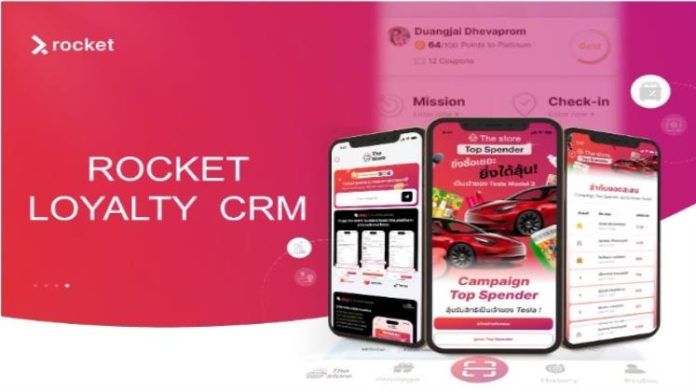Introduction
Customer Relationship Management (CRM) is now an integral component of business. Companies ranging from the smallest startups can use CRM (Rocket CRM) systems to organize and manage customer metrics, interactions, and develop long-term customer relationships. Beginners however often get confused while using a CRM platform for the first time in their life. The good news is anyone can learn, when they have the right guidance, how to use CRM effectively. This step-by-step guide will demonstrate exactly how and enable you to start getting the most out of your CRM system.
Step 1: Know What CRM Is For
But before we get into the nuts and bolts, let’s talk about why businesses use CRM at all. CRMs are used as a central repository to hold the customers contact information, purchase history, preferences and interactions. It allows businesses to provide personalized services, simplify sales, and foster customer satisfaction. By consolidating all of your systems into one, that eliminates confusion, reduces redundancy, and makes sure your team always has the latest and most current information right at their fingertips.
Step 2: Selecting the Right CRM Platform
Not all CRM are made the same. Some are built for small businesses looking for a straightforward solution; others work for enterprises with more complex needs. If you are a beginner, try to choose a CRM that meets your business goal, the size of your team. Well known platforms such as HubSpot, Salesforce, and Zoho CRM, for example, provide features for beginners such as contact management, email integration, and reporting dashboards. Use free trials to experiment with some before you make a final commitment.
Step 3: Establish Objectives and Goals.
Finally, as we mentioned earlier, one of the most common new CRM users’ mistakes is to start without a plan. Before you begin entering any data, begin to ask yourself:
- Are you trying to optimize or increase the efficiency of sales?
- Are you committed to delivering high levels of customer service?
- Do you want better reporting and insights?
Specify objectives for goals that ensure that you use CRM features that support the goals. If for instance your primary objective is to increase customer service, you should focus on the features like case management, and automated responses. If you want to increase sales, concentrate on lead tracking and sales pipelines.
Step 4: Organizing and Importing Your Data.
Once you have your CRM in place, you’ll want to bring together all of your customer information into a single place. Begin by cleaning up your existing data — remove duplicates, fix any spelling errors and make sure your contact information is up to date. Next, import and upload this clean date to your CRM. Most systems will let you import spreadsheet data or even integrate directly with your email provider. Your data is the lifeblood of a useful CRM system, so make sure you have it in order.
Step 5: Identify the Important Features
CRM systems are armed with a variety of tools, but it’s more important to be well-versed in the basics for beginners. Some essential features include:
- Contact Management: Save and manage customer information.
- Sales Pipeline: Follow leads through stages of the sales pipeline.
- Email Integration: Sending, tracking, and analyzing customer communications.
- Reporting Dashboards: Get visibility into sales performance and customer behavior.
In gradually picking up these features, you’ll develop confidence and won’t feel so overwhelmed.
Step 6: Automate The Tasks Perform Multiple Times
Automation is one of the most significant advantages of CRM. And, rather than manually following up or updating records, you can automate it. For example, if a customer fills out a form on your company’s website, the CRM can automatically generate a new contact, allocate it to a salesperson, and send a welcome email. Not only does automation free-up time for reps, but it also helps guidelines align with each customer interaction.
Step 7: Train Your Team
A CRM is worthless if your team doesn’t know how to use it. Invest in training your staff about the features of the system and ‘best practices’. Encouraging them to log all customer interactions, update data frequently, and collaborate through the CRM. On top of that, many platforms offer tutorials, webinars and customer support to guide beginners along the way.
Step 8: Track and Refine
Lastly, utilising CRM effectively is also an evolving journey. I suggest going back to the system a month or two ago and see if there were areas that could have been improved. Keep an eye on the metrics and analysis offered through your CRM on whether you’re making headway toward your goals. If your content isn’t working, tweak your approach. As time passes, you will find other ways to use CRM more effectively, developing, for example, your sales pipeline or customizing client communication.
Conclusion
Getting the hang of CRM doesn’t have to be difficult. By knowing what it is for, having clear goals and well-organized data, and familiarizing yourself with the most beginner-friendly features, you too can be an active CRM user in the shortest time possible. The trick is to begin small and keep with it, slowly working your way up to more advanced capabilities such as automation and analytics. When implemented effectively, CRM (Rocket CRM) isn’t just software; it’s a strategy for nurturing stronger customer relationships and paving the way for ongoing business success.
